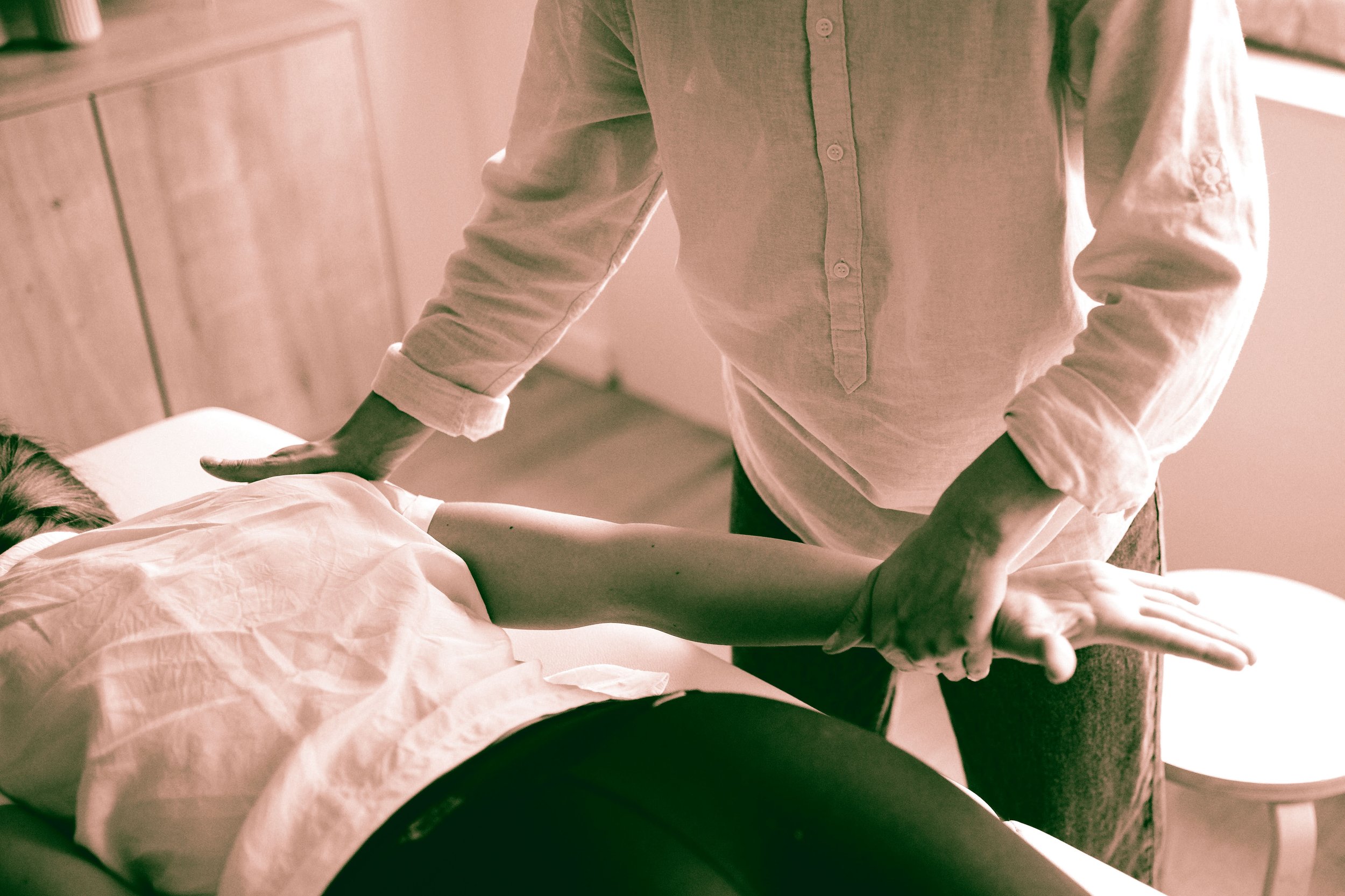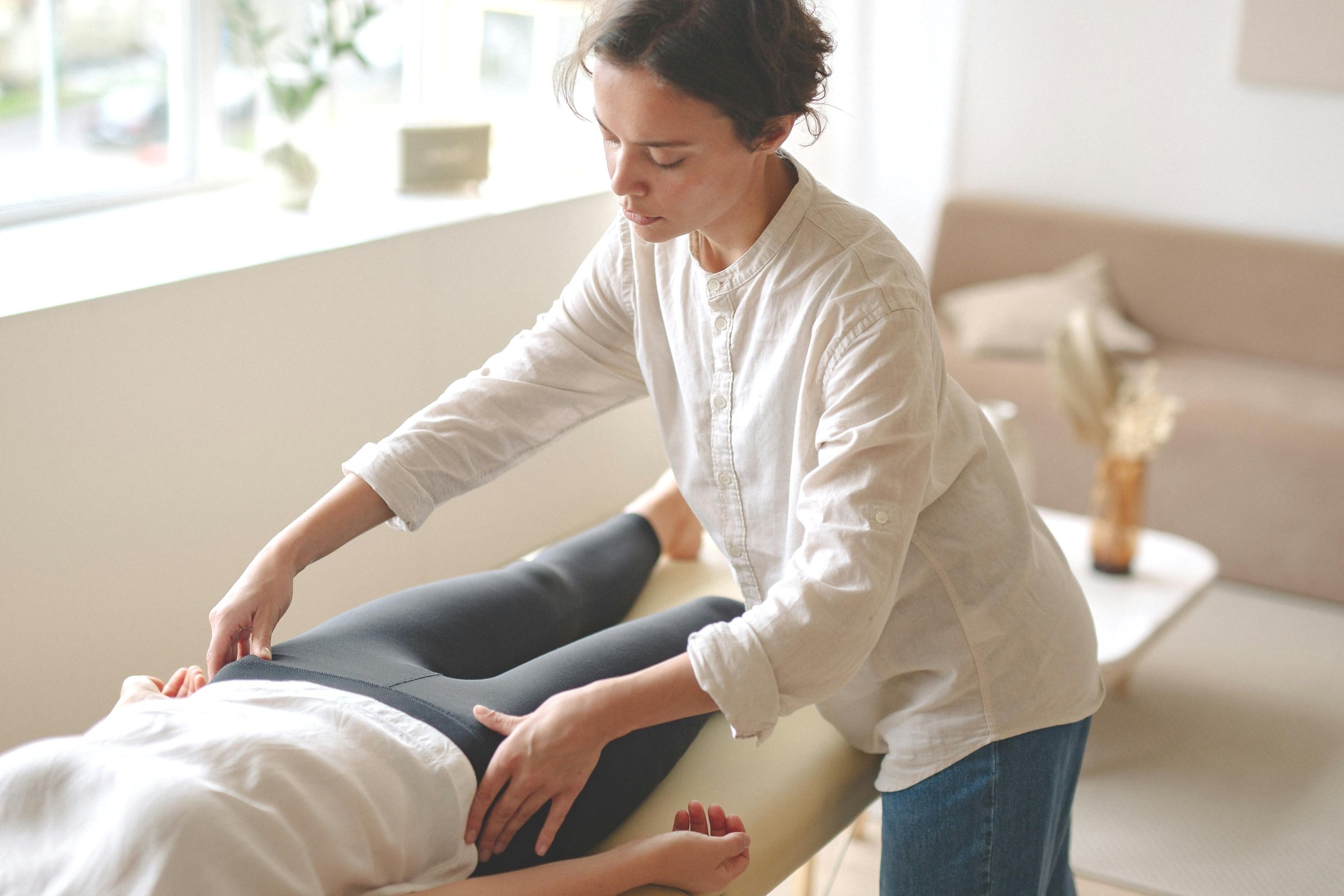
Pelvic Health Physiotherapy
Pelvic health physiotherapy focuses on the assessment, treatment, and rehabilitation of conditions affecting the pelvic floor muscles, bladder, bowel, and surrounding structures. From incontinence to prolapse, pelvic pain, and postpartum recovery, evidence shows that physiotherapy can significantly reduce and even cure many pelvic health symptoms.
Our specialist physiotherapist provides expert care tailored to women, men, and individuals across all life stages, including pregnancy, postpartum, menopause, and post-surgical recovery.

What Conditions Can Be Treated with Pelvic Health Physiotherapy?
-
One in three women will experience bladder problems at some point in their life, yet many suffer in silence. Pelvic health physiotherapy can improve symptoms in around 80 percent of women. Common conditions include:
Stress urinary incontinence
Urge urinary incontinence
Overactive bladder
Increased frequency and nocturia (night-time urination)
Pain or discomfort while urinating
Incomplete emptying and repeated UTIs
Bladder Pain Syndrome (BPS)Description text goes here
-
One in twenty people experience poor bowel control, regardless of age or gender. Physiotherapy can address:
Faecal and flatal incontinence (reduced control of stool and wind)
Constipation and bowel urgency
Faecal staining on underwear
Painful bowel movements and anal pain
Abdominal pain with constipationDescription text goes here
-
The body undergoes major changes during pregnancy and postpartum recovery. Physiotherapy can support:
Pelvic girdle pain (PGP) and back pain
Rib, hip, and groin pain
Sciatica, pins and needles, numbness
Pelvic floor weakness and incontinence
Exercising safely during pregnancy and postpartum recovery
Prolapse, vaginal heaviness, and birth injuries
Scar management (C-section, perineal, or episiotomy scars)
Returning to exercise and sexual activity safely
-
Hormonal changes during menopause can lead to weakened pelvic floor muscles, increasing the risk of:
Urinary and bowel incontinence
Frequent UTIs and nocturia
Constipation and bloating
Pelvic pain and discomfort
Vaginal dryness and painful intercourseption
-
Prolapse occurs when the bladder, uterus, bowel, or rectum shifts downward due to weakened ligaments and muscles. Common types of prolapse include:
Cystocele (bladder prolapse)
Urethrocele (urethral prolapse)
Uterine prolapse (uterus)
Enterocele (small bowel prolapse)
Rectocele (rectum prolapse)
-
Between 11 and 34 percent of men over 65 experience urinary incontinence, but pelvic health issues affect men of all ages. Conditions treated include:
Bladder and bowel control issues
Pelvic pain and nerve entrapment
Irritable Bowel Syndrome (IBS) and prostatitis
Coccydynia (tailbone pain)
Erectile dysfunction and post-prostatectomy recovery
-
One in six women experiences chronic pelvic pain lasting more than six months. Physiotherapy can help manage:
Vaginismus, vulvodynia, and vestibulodynia
Dyspareunia (pain with sex)
Pudendal nerve injury and coccydynia
Interstitial cystitis (BPS)
Endometriosis and post-surgical scar pain
Lichen Sclerosis and Lichen Planus
How to Prepare for a Pelvic Health Assessment
Understand the Process
Your first session will include:
A detailed medical history review
Discussion of bladder, bowel, and sexual health
A full musculoskeletal assessment (core, pelvis, breathing patterns)
If appropriate, an internal pelvic exam (vaginal or rectal) will be suggested, with your full consent
Before Your Appointment
Wear loose, comfortable clothing to make movement assessments easier
Stick to your normal hygiene routine before your appointment
Write down any symptoms, concerns, or questions to discuss
Be prepared to share past pregnancies, surgeries, or pelvic health issues
Clearly express your goals, whether it is pain relief, regaining bladder control, or safely returning to exercise

Your Team
Jennie Hughes
Pelvic Health Physiotherapist
BSc (Hons), Acupuncture accredited, APPI trained.
Affiliate member of the Association of Pelvic Obstetric and Gynaecological Physiotherapist
Jennie Hughes is a Pelvic Health Physiotherapist. She was the team lead Pelvic Health physiotherapist at St George’s Hospital for two years, before working privately. She is one of the very few physiotherapists in London specialised in this area.
Jennie graduated from Sheffield Hallam University with a BSc (Hons) Physiotherapy degree. After completing her time as a junior she specialised in Musculoskeletal physiotherapy and became a senior physiotherapist at St George’s Hospital. After completing a rotation in Women’s Health she soon realised this is where her passion lay and further specialised in Pelvic Health Physiotherapy.
Jennie treats pelvic floor dysfunctions through education and advice, manual therapy, exercises, myofascial release techniques, acupuncture and stretches. Having experience in pelvic floor physiotherapy and APPI Pilates training, her approach is patient centred, working together with her patients to optimize their outcomes by targeting treatments to achieve their goals and functional requirements. She applies her musculoskeletal background to pelvic health issues when treating both ante-natal and post-natal women for specific, pregnancy-related, musculoskeletal pain conditions. The emotional health of her clients is something she always has in mind, creating a safe space where her patients are reassured they are going to be heard, helped and guided.


-
Pelvic health physiotherapy is the therapeutic treatment of all disorders affecting the pelvis and pelvic. From incontinence to prolapse, pelvic pain or constipation, there is growing evidence that physiotherapy can alleviate, and in many cases cure these symptoms.
-
+ Bladder
It is thought that 1 in 3 women will suffer from bladder problems at some point in their life. Pelvic floor physiotherapy has been shown to be effective in reducing symptoms for around 80% of women.
Stress urinary incontinence
Urge urinary incontinence
Overactive bladder
Increased frequency
Pain with urinating
Increased nocturia (night)
Incomplete emptying
Repeated UTIs
BPS (Bladder Pain Syndrome)
+ Bowel
About 1 in 20 people experience poor bowel control. It's often not talked about, but both men and women of any age can experience altered bowel control.
Faecal incontinence
Flatal incontinence (reduced wind control)
Constipation
Bowel urgency
Faecal staining on underwear
Pain with bowel movement
Anal pain
Incomplete emptying
Abdominal pain with constipation pregnancy
+ Pregnancy
During pregnancy, your body undergoes huge changes, physically and emotionally.
Whilst majority of the time these changes are manageable, there are still symptoms which can persist where pelvic health physiotherapy can offer huge help and relief.Pelvic Girdle Pain (PGP)
Back pain
Rib pain
Hip or groin pain
Sciatica pins and needles or numbness
Pelvic floor symptoms
Exercising safely
Incontinence
Prolapse or vaginal heaviness post-natal
+ Postpartum
We must allow time for the body to heal after giving birth.
It is expected that you will experience aches and pains initially after giving birth, but if these persist or you experience any of the below, please consider booking an assessment.Musculoskeletal pain
Sciatica
Abdominal separation (RAD)
Urinary incontinence
Bowel incontinence
Prolapse
Birth injuries or tears
Scar management (episiotomy or perineal or C-Section)
Scar massage
Returning to sexual activity
Returning to exercise safely menopause
+ Menopause
A lot of changes occur during menopause.
Pelvic floor disorders can present in a number of ways and may include the following:Leaking of urine with coughs, sneezes, or exercise
Leaking of urine on the way to the toilet
Nocturia (increased frequency to urinate in the evening)
UTIs
Bowel urgency
Being unable to control wind
Constipation
Vaginal dryness
Painful sexual intercourse
Pelvic pain
+ Prolapse
Pelvic organ prolapse is defined as the descent or lowering of the bladder, bowel or uterus into the vagina.
This happens because the ligaments, fascia and muscles are not holding the organs in the correct place and they start to descent.Cystocele (bladder)
Urethrocele (urethra)
Uterine (uterus)
Enterocele (small bowel)
Rectocele (rectum)
Pelvic pain
+ Men's Health
It is estimated 11 to 34% of older men have some form of urinary incontinence (UI). 2 to 11% of older men deal with symptoms of UI every day. Some men may experience more than one type of incontinence.
Bladder control
Bowel control
Nerve entrapment
Pelvic pain
Irritable Bowel Syndrome (IBS)
Prostatitis
Coccydynia
Erectile dysfunction
Prostectomy
+ Pelvic Pain
Pelvic pain which has lasted for six months or more is known as chronic and affects around 1 in 6 women. It can either come or go, or may be constant, and is normally more severe than normal pain.
Vaginal pain including vaginismus and vulvodynia
Vestibulodynia
Dyspareunia (pain with sex)
Pudendal nerve injury
Interstitial cystitis or BPS
Coccydynia
Irritable Bowel Syndrome (IBS)
Pelvic pain
Endometriosis
Scar pain (post-delivery or gynaecological surgery)
Pain post-gynaecological surgery
Lichen Sclerosis or Planus men’s health
-
Understand the Process: Know that the first session involves a detailed assessment of your medical history and pelvic health symptoms and problems. There will also be a discussion about your bladder, bowel, and sexual health. The physical examination will entail a full assessment of your musculoskeletal system including your core cylinder, pelvic area and a breathing assessment. Likely an internal pelvic exam will be suggested via the vagina or anus, which is, of course, only completed with your consent.
Wear Comfortable Clothing: Wear loose, comfortable clothing to make movement easier during the physical assessments.
Avoid Over-Cleaning: Stick to normal hygiene routines before the appointment.
Write Down Symptoms: List any symptoms, concerns, or questions beforehand to ensure nothing is overlooked during the session.
Know Your Medical History: Be prepared to discuss your medical history, including past pregnancies, surgeries, or any pelvic health issues you’ve experienced.
Be Open About Your Goals: Clearly express what you hope to achieve from therapy, such as reducing pain, regaining bladder control, or returning to exercise during your postpartum recovery. Our goal is for you to achieve your goals.


